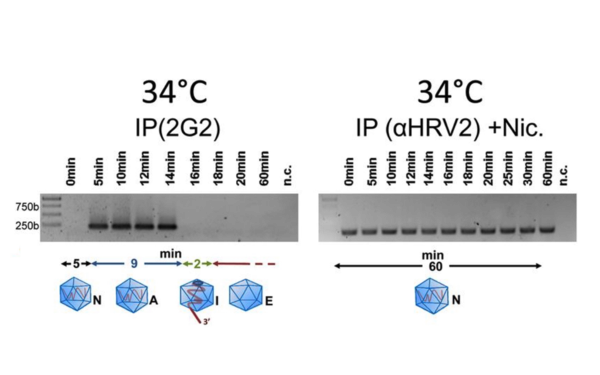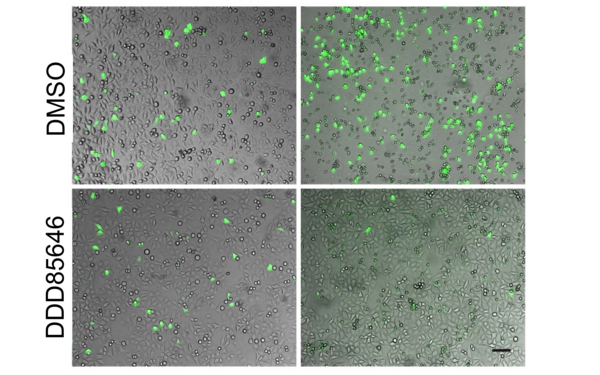Spotlights
An orderly uncoating
In tight collaboration with the Blaas group at the Max Perutz Labs we have found that the RNA genome of human rhinovirus 2, a prototypic picornavirus, in vivo exits its protective capsid shell presumably through a pore at the two-fold axis with the 3´ end first. This sheds new light on the viral uncoating process and the still rather elusive spatial organization of the RNA genome in the virion.
Myr-iad effects
We recently demonstrated the importance of the fatty myristic acid modification of the capsid protein VP4 in multiple stages of the coxsackievirus B3 infection cycle. Using a highly specific inhibitor of the host enzyme N-myristoyltransferase (NMT) responsible for this modification, we extended the finding to a number of other picornaviruses, uncovering NMT as a potential new drug target.
Turning up the heat on rhinovirus
We have shown that nanoDSF, an advanced differential scanning fluorimetry method, is a very useful tool for studying RNA uncoating of rhinoviruses in vitro, by monitoring the shift and change in intrinsic fluorescence of tryptophan residues in the capsid proteins of virions exposed to a temperature gradient. We further demonstrate its suitability for high-throughput screening of drug-like candidates inhibiting this critical early step in the viral life cycle.


